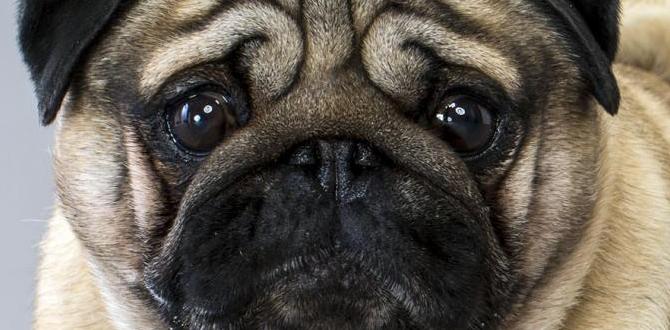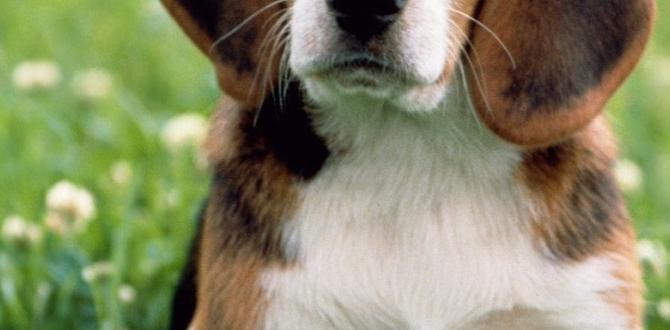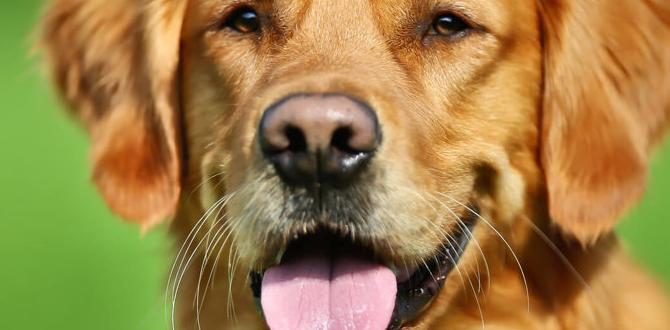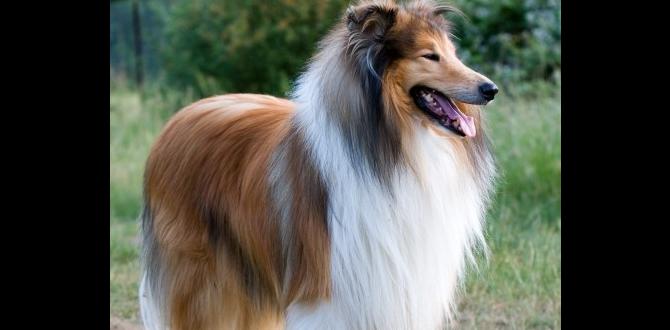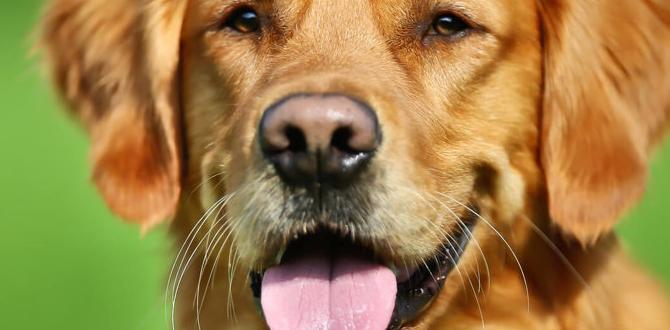Do you want your dog to be friendly and well-behaved? Socializing your dog is essential for their happiness and safety. But where do you start? Don’t worry! These dog socialization tips for beginners will guide you. Make your dog-friendly and confident by following these simple steps.
Key Takeaways
- Socializing helps dogs become friendly and confident.
- Start introducing your dog to different environments.
- Teach your dog using positive experiences and rewards.
- Dog socialization tips for beginners include gradual exposure to new things.
- Seek help from professionals for specific behavioral issues.
Introducing Your Dog to New Environments
Introducing your dog to new environments is crucial for their socialization. Start with familiar places and gradually explore new ones. Take your dog to parks, around the neighborhood, or even to friendly stores. Each new place introduces different sounds, smells, and sights. Keep your dog’s comfort in mind and ensure their safety at all times. Bring treats and toys to create positive experiences. Reward calm behavior and make each outing fun. Over time, your dog will become more comfortable and confident in new settings.
- Visit different parks and outdoor places.
- Walk around the neighborhood regularly.
- Introduce to friendly pet stores.
- Use rewards for calm behavior.
- Ensure a positive experience every time.
Socialization is not about overwhelming your dog. It’s about making them feel safe and happy. Be patient and celebrate small victories. Remember, each dog learns at their own pace. The key is consistency and positivity.
Fun Fact or Stats : Dogs have over 220 million smell receptors, making new environments exciting!
Why New Environments Matter
Have you ever moved to a new place and felt nervous? Dogs feel the same when they explore new spots. New environments help dogs learn about the world. They meet people, other animals, and experience different sounds. This learning helps them become more adaptable and less anxious. Imagine how confident they will be at family gatherings or trips! Dogs that are well-socialized are happier and more balanced. They enjoy life without fear and stress.
How to Make Outings Fun
Do you know what makes outings fun for dogs? Treats, toys, and lots of love! Plan your outings as enjoyable adventures. Bring your dog’s favorite toy or snack. Play games like fetch or tug-of-war to make the experience exciting. Encourage curiosity by letting them sniff and explore safely. Praise their bravery and calmness. By making outings fun, your dog will look forward to them. They’ll bond with you and learn that the world is a great place to explore!
What to Avoid in New Places
Are there things to avoid when socializing your dog? Yes, indeed! Avoid situations that might scare or overwhelm them. Loud noises, aggressive animals, or busy roads can be frightening. Keep distance from unfamiliar dogs if you’re unsure of their behavior. Watch your dog’s body language. If they seem stressed, it’s okay to leave and try again later. Never push them too hard or too fast. Always prioritize their safety and comfort. Remember, successful socialization comes from positive, not negative, experiences.
Introducing Your Dog to New People
Meeting new people is a big part of socialization. Start by introducing your dog to friends and family in a calm setting. Gradually move to more public places. Let your dog approach at their own pace. Use treats to reward friendly behavior and curiosity. Teach them to sit or stay before greeting others. This helps control excitement and ensures good manners. Always monitor interactions to keep everyone safe and happy.
- Begin with familiar friends and family.
- Gradually introduce to strangers.
- Use treats for positive reinforcement.
- Teach basic commands like sit or stay.
- Watch for signs of stress or discomfort.
Introducing your dog to new people is about patience and understanding. Respect their comfort levels and never force interactions. Positive experiences build confidence and trust. Over time, your dog will welcome new faces with a wagging tail!
Fun Fact or Stats : Dogs can understand up to 250 words and gestures!
Why Meeting New People is Important
Why is it important for dogs to meet new people? Imagine never seeing anyone outside your family. It would be strange and maybe scary to meet someone new, right? The same goes for dogs. Meeting new people helps them learn how to act and behave. They get used to different voices, smells, and actions. This makes them friendly and less fearful. Social dogs are more confident and adapt better to changes. They can go to the vet, groomer, or visit friends with ease. Meeting new people enriches their lives and makes them happier!
How to Help Your Dog Enjoy People
Do you want your dog to enjoy being around people? Start by making every meeting positive. Offer treats and praise when they meet someone new. Keep interactions short and sweet at first. Teach them that people mean good things, like petting and playing. Encourage them to be calm and gentle. If they seem shy, give them space and time. They’ll learn to trust you and others. Soon, they’ll wag their tails and enjoy meeting new friends!
What to Do if Your Dog is Fearful
Is your dog scared of new people? Don’t worry, there’s hope! First, understand their fear. It could be loud voices or sudden movements. Work slowly and patiently. Use treats and toys to create positive associations. Introduce new people one at a time in a quiet setting. Let your dog decide when to approach. Praise them for any brave steps they take. If needed, seek help from a dog behaviorist. Fearful dogs need extra love and care, but they can learn to trust and enjoy life!
Helping Your Dog Get Used to Other Animals
Introducing your dog to other animals can be challenging but rewarding. Start with calm and friendly animals to ensure a positive experience. Keep initial meetings short and controlled. Use leashes or barriers for safety. Allow your dog to sniff and observe from a distance. Reward calm behavior with treats and praise. Gradually reduce the distance as they become more comfortable. This helps them learn what to expect and how to behave around other animals.
- Begin with calm, friendly animals.
- Use leashes for controlled introductions.
- Keep initial meetings short.
- Reward calm observations.
- Gradually reduce the distance.
When dogs meet other animals, they learn social cues and boundaries. It’s important to respect their comfort levels and ensure safety. With patience and practice, your dog can become sociable with other animals.
Fun Fact or Stats : Dogs have unique nose prints, just like human fingerprints!
Why Meeting Other Animals is Important
Have you ever watched animals playing together? It’s fun and teaches them a lot. Meeting other animals helps dogs learn how to communicate. They understand body language, play signals, and boundaries. This learning helps them avoid conflicts and enjoy playtime. Social dogs can join playgroups and make new friends. They become happier and more balanced. The more animals they meet, the better they understand the world around them!
How to Encourage Positive Interactions
Do you want your dog to have positive interactions with other animals? Start by choosing calm and friendly companions. Use treats and praise to reward good behavior. Allow your dog to observe first before engaging. Keep meetings short and positive. Watch for signs of stress or discomfort. Adjust the pace according to their comfort. Encourage gentle play and respect their space. With time, they’ll learn to enjoy the company of other animals.
What to Do if Your Dog Shows Aggression
Is your dog aggressive towards other animals? Aggression can stem from fear or lack of socialization. Begin by identifying triggers and avoiding them initially. Consult a professional trainer for guidance. Use positive reinforcement to encourage calm behavior. Introduce animals one at a time in a controlled setting. Monitor interactions closely and separate if needed. With patience and training, even aggressive dogs can learn to socialize peacefully. Remember, safety first for everyone involved.
Using Positive Reinforcement for Socialization
Positive reinforcement is a powerful tool for training and socialization. It involves rewarding your dog for good behavior with treats, praise, or playtime. This method encourages them to repeat the behavior. When socializing, use positive reinforcement to create happy experiences. Reward your dog for being calm, friendly, or brave. This builds trust and confidence, making socialization enjoyable for them.
- Reward good behavior with treats or praise.
- Use toys and games for positive associations.
- Encourage calmness and friendliness.
- Build trust and confidence through rewards.
- Reinforce brave and positive actions.
Positive reinforcement helps dogs learn quickly and happily. It strengthens the bond between you and your dog. This method is effective and fun for both of you. Remember, consistency and patience are key to success.
Fun Fact or Stats : Dogs can learn tricks like sit, stay, and roll over using rewards!
Why Positive Reinforcement Works
Have you ever gotten a reward for doing something good? It feels great, right? Positive reinforcement works the same way for dogs. It makes them happy and eager to learn. Every time your dog does something right, reward them. This teaches them that good behavior gets them something nice. Over time, they repeat these actions willingly. It’s a joyful way to train and build trust. Positive reinforcement makes learning fun and effective!
How to Use Treats Effectively
Do you want to know the secret to using treats effectively? Timing is everything! Give treats immediately after your dog shows good behavior. This links the reward to the action. Use small, tasty treats they love. Don’t overdo it; a little goes a long way. Combine treats with praise and affection for even better results. Rotate treats to keep it exciting. Remember, treats are just one part of the reward. Your love and attention are priceless!
What to Avoid with Rewards
Are there things to avoid when using rewards? Yes, avoid using treats as a bribe. Rewards should follow good behavior, not promise it. Don’t use them to comfort your dog when scared; it reinforces fear. Be mindful of treat size and frequency to maintain a healthy diet. Avoid rewarding bad behavior, as it can encourage unwanted actions. Always use rewards wisely and with purpose. This ensures your dog learns and grows positively!
Creating a Routine for Socialization
Creating a routine helps your dog adjust better to socialization. Dogs thrive on consistency and knowing what to expect. Plan regular outings and interactions. This helps them get used to different situations and people. Consistent exposure builds confidence and reduces anxiety. Use a calendar or planner to organize these activities. Make socialization a part of their daily routine, just like feeding or walks.
- Plan regular outings and interactions.
- Use a calendar for scheduling activities.
- Consistency builds confidence and reduces fear.
- Make socialization part of daily routine.
- Introduce new experiences gradually.
Routines make socialization predictable and less stressful. Dogs learn that different situations can be fun and safe. With time, they’ll adapt to changes with ease. Remember, patience and persistence are your best friends.
Fun Fact or Stats : Dogs can recognize their owner’s routine and schedule!
Why Routines Matter for Dogs
Do you have a routine that makes your day easier? Dogs feel the same way about routines. They love knowing what’s coming next. Routines help dogs feel secure and reduce anxiety. When they know what to expect, they relax and enjoy the process. It helps them learn faster and adjust to new things. A well-planned routine brings order and predictability to their lives. Happy dogs are those that know their routine!
How to Build a Socialization Schedule
Do you want to build an effective socialization schedule? Start by listing the activities you want to include. Plan outings, meetups, and training sessions. Allocate specific times for each activity. Make sure to include enough rest and playtime. Keep the schedule flexible but consistent. Introduce new things gradually. Monitor your dog’s responses and adjust as needed. A thoughtful schedule keeps your dog engaged and happy!
What to Include in a Socialization Routine
What should you include in your dog’s socialization routine? Include varied activities to keep them interested. Plan visits to different places, like parks and stores. Schedule meetups with friends, family, and other dogs. Add training sessions for basic commands and skills. Make time for rest and play to balance learning. Rotate activities to keep it fresh and exciting. A diverse routine helps your dog adapt and grow!
Conclusion
Socializing your dog is an important part of their development. By following these dog socialization tips for beginners, you can help your dog become friendly and confident. Remember to be patient and consistent. Use positive reinforcement and create a fun learning experience. With time and effort, you’ll have a happy, well-socialized dog!
FAQs
Question: Why is socializing my dog important?
Answer: Socializing your dog teaches them to be friendly and confident. It helps them adapt to different environments and meet new people and animals. Well-socialized dogs are happier and less anxious. They can enjoy outings and activities without fear or stress.
Question: How should I start socializing my puppy?
Answer: Start by introducing them to familiar people and places. Gradually expose them to new environments and experiences. Use positive reinforcement to reward good behavior. Be patient and keep interactions short and positive. Puppies learn quickly with consistent, gentle guidance.
Question: Can I socialize an older dog?
Answer: Yes, older dogs can be socialized, though it may take more time. Start slowly and use positive reinforcement. Gradually expose them to new situations and people. Be patient and understanding of their comfort levels. With effort and love, older dogs can learn to enjoy social experiences.
Question: What if my dog shows fear during socialization?
Answer: If your dog shows fear, take a step back and go slow. Use treats and praise to create positive associations. Avoid situations that cause stress. Allow them to approach at their own pace. Seek professional help if needed. Remember, patience and understanding are key.
Question: How do I know if my dog is well socialized?
Answer: Well-socialized dogs are calm and friendly around other people and animals. They adapt easily to new environments and experiences. They show curiosity rather than fear. Watch for relaxed body language and wagging tails. A confident dog is a sign of successful socialization.
Question: Are there specific dog socialization tips for beginners to follow?
Answer: Yes, start with familiar places and faces. Gradually introduce new experiences. Use positive reinforcement and be patient. Create a routine to make socialization predictable. Consult professionals if needed. These tips help beginners socialize their dogs effectively.
Meet Elyse Colburn, the devoted canine companion and storyteller behind the enchanting world of “Tales, Tails, and Adventures Unleashed.” A passionate dog enthusiast with a heart full of paw prints, Elyse Colburn shares heartwarming tales and insightful adventures, celebrating the joy, loyalty, and endless antics that make every dog a true hero. Join Elyse Colburn on this tail-wagging journey, where every post is a love letter to our four-legged friends.

